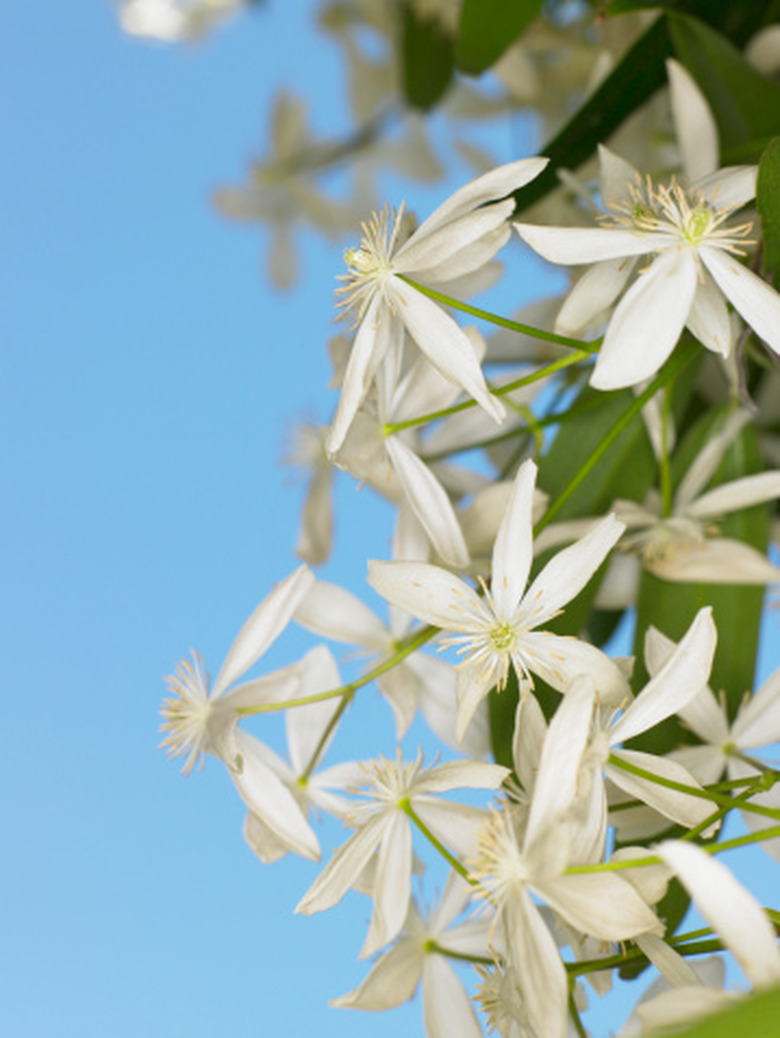How To Divide Clematis
Division is the most practical method of propagating herbaceous clematis such as Clematis integrifolia and shrub types such as C. heracleifolia. Propagate vining types by seeds, cuttings or layering. Divide clematis in spring so that the divided plants have a long growing season to heal their wounds and become established. If you miss the opportunity in spring, you can also divide in fall after the plant becomes dormant. Get the divisions in the ground as soon as possible and use a fungicide on the wounds to prevent rot.
Step 1
Use pruners to cut off the plant about a foot above the ground.
Step 2
Dig up the plant with a shovel, taking care not to damage the roots. Shake off the excess soil.
- Division is the most practical method of propagating herbaceous clematis such as Clematis integrifolia and shrub types such as C. heracleifolia.
- Get the divisions in the ground as soon as possible and use a fungicide on the wounds to prevent rot.
Step 3
Use pruners to cut the plant into sections, each having a generous portion of the crown, buds and roots.
Step 4
Replant the divisions.
Step 5
Water thoroughly at planting time and every week thereafter until the plants are established. Add a complete fertilizer at the time of the second watering.
Clematis & Rot
Several conditions can encourage stem rot. A lack of air flow or water on the leaves also causes the fungus to attack the clematis stems. One of the first symptoms of stem rot is brown or reddish-brown spots on the leaves or stems. Stems infected with stem rot turn dark on the inside. Lesions may develop on the stem at the leaf nodes. Buds and flowers turn black and fall off or the stem weakens and falls on infected plants. If the infection reaches the bottom of the cut vine, remove more of the stem from the plant. Prune all stems back to at least 1 inch below the infected area so you remove the areas with fungus. Control stem rot with a good support system for your clematis, such as a trellis. Fungal sprays are useless against stem rot caused by the Ascochyta clematidina virus. Continued care of the clematis vine often results in uninfected growth in the spring.
- Use pruners to cut the plant into sections, each having a generous portion of the crown, buds and roots.
Things Needed
- Shovel
- Pruners
- Complete fertilizer
Tip
Small divisions take a long time to become established. Clematis is drought tolerant and thrives in soils of minimum fertility. Once established, the plants rarely need watering or fertilization.
References
- "The Flower Gardener's Bible"; Lewis and Nancy Hill; 2003
- "Plant Propagation A to Z: Growing Plants for Free"; Geoff Bryant: 2003
- National Agricultural Llibrary: Ascochyta Clematidina, The Cause of Stem-Rot and Leaf-Spot of Clematis; W.O. Gloyer
- Royal Horticulture Society: Clematis Wilt
- Howells On Clematis: Researc; John Howells
- Clemson University Cooperative Extension: Clematis; Karen Russ, et al
- Michigan State University: An Introduction to Clematis; Cheryl M. English
